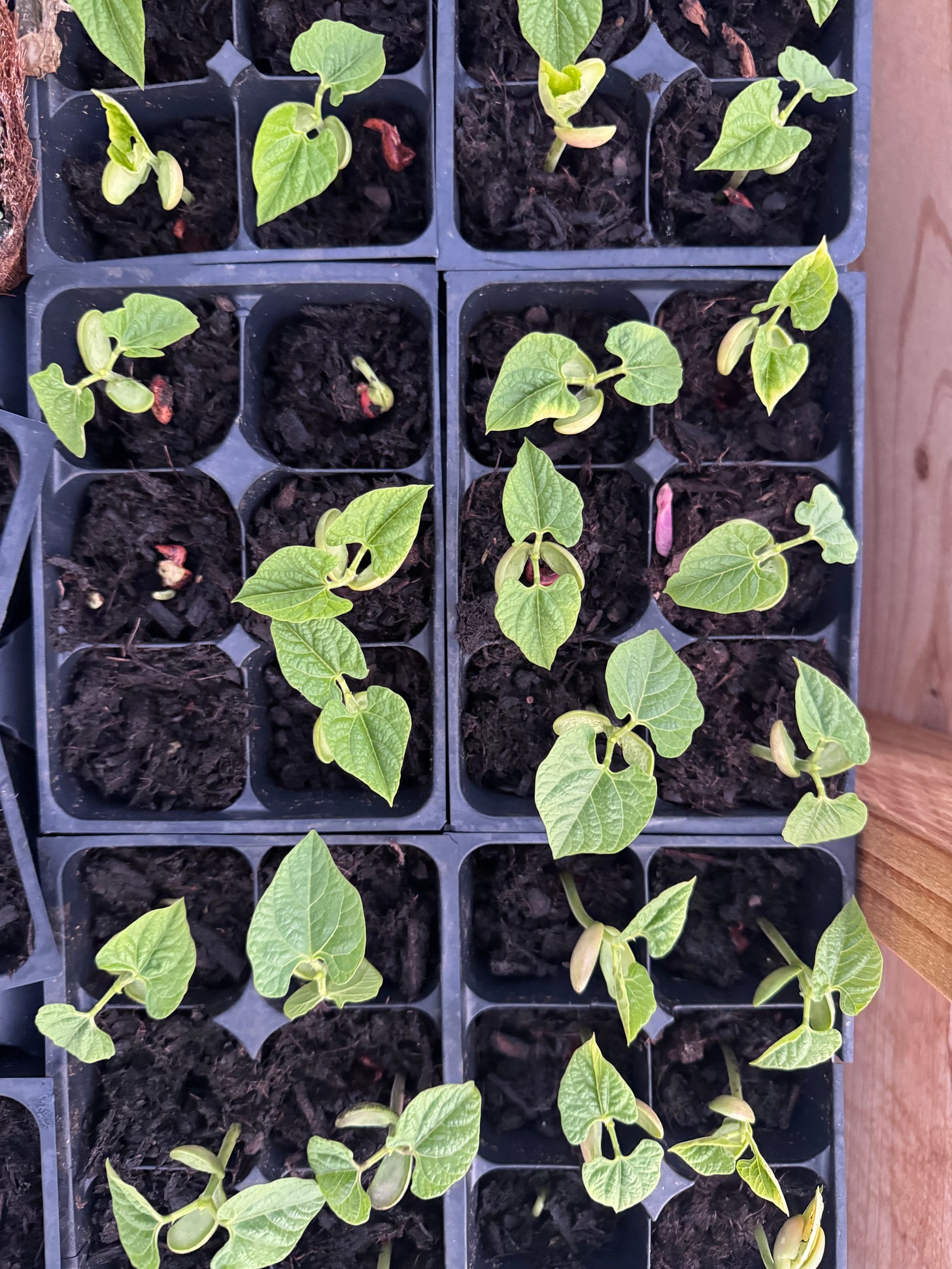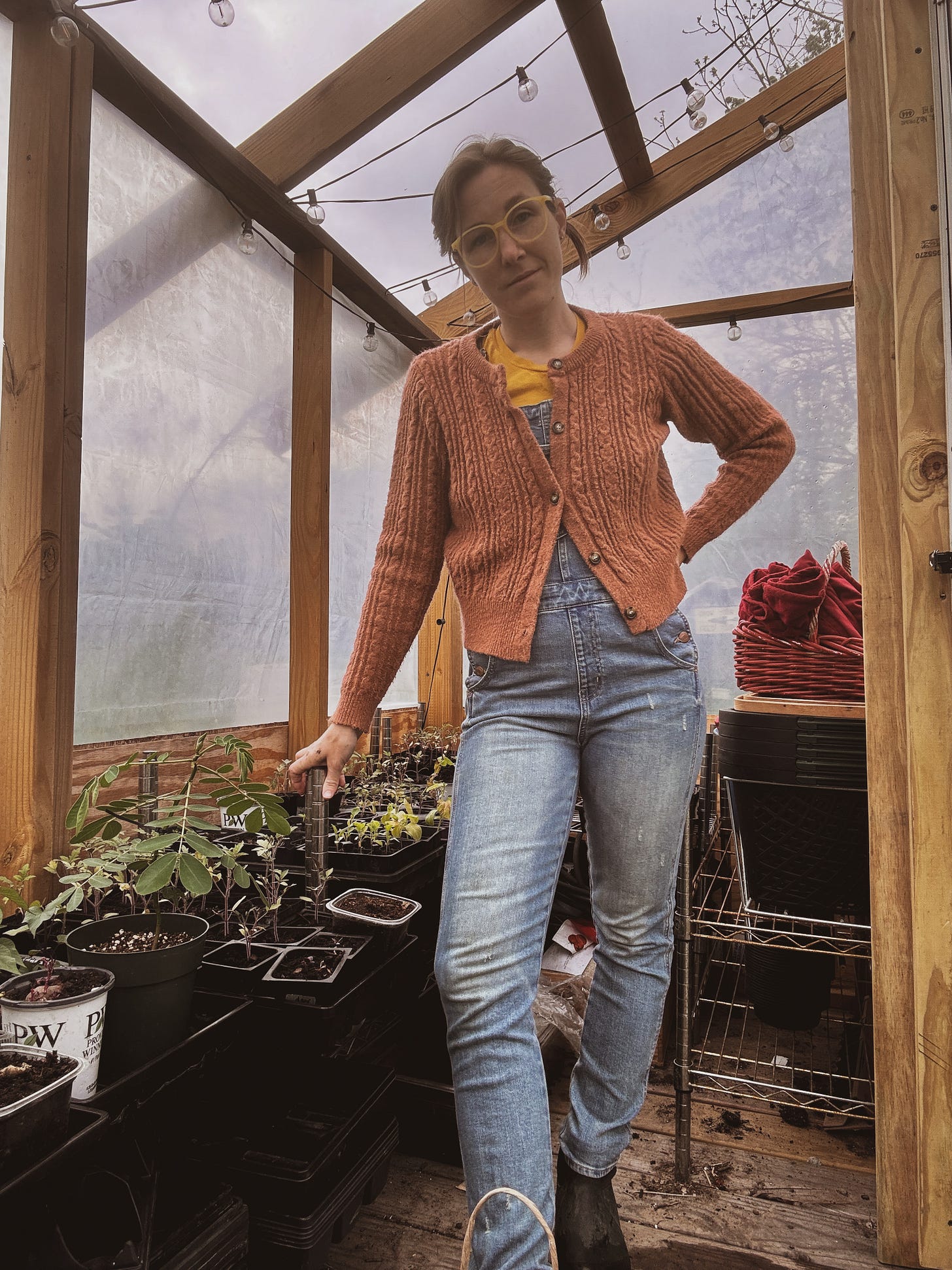This time of the year we typically have the garden planted. We are out of frost danger and I’m eager to be in the fully swing of gardening. No more shuffling seedlings around, no more potting up, no more hardening off. It’s just planting, planting, planting. This year, though, the greenhouse is maxed out with over 200 seedlings. Each day I ponder planting some in the garden but it just doesn’t feel right.
Keep reading for:
a case for patience as a gardener
a confession that the garden is a place for me to try out personal growth
why your tomato seedlings may be purple
& for paid subscribers - a briefing on fertilizers, how they work and what NPK do for plants, and how to use that information
Or, if you’d like to support my work but don’t want to commit to being a paid subscriber, buy me a coffee here.
Patience
Patience is not something I would include in my gardening skillset (or others tbh), but I am trying to embrace it this year. I started seeds later than normal. I am planting later than normal. At first, I blamed this on a busy schedule or changes to the weather. It’s not the case. I’ve put aside my paper plans in favor of what feels right.
My intuition says to pause, to wait.
In a recent greenhouse chat, a live chat every Friday in my diy greenhouse about seasonal gardening topics, I talked about how patience is rewarded in the garden. This conversation was about hardening off and why I prefer the long-slow process. It got my wheels turning. Don’t I jeopardize an entire year of peppers because I plant them hastily in April without making sure our long-term forecast is free of sub-50-degree temps? What about last year when I planted 75 tomatoes with a new trellis system and didn’t do my homework first? And there’s the yearly occurrence of ordering a boatload of seeds before checking my inventory.
In my eagerness to *be gardening*, I’ve made my life harder, set myself up for failure, and cost myself money.
My gardening experience goes beyond a hobby. I’m not sure what you would call it - I often distinguish myself as a homestead gardener (while fully acknowledging that this really only means something to me). Not quite a farmer on scale or profit, but much more serious and intentional than any backyard gardener I’ve encountered. This is all context for the fact that I garden for reasons beyond the outcome of providing food for my family. It’s a small, but meaningful, act of resistance. It grounds me by calibrating my values on a scale of being and doing - balancing how I am with what I do. It slows me down in an otherwise rushed and often chaotic lifestyle.
While I want my garden to have marigolds blooming next week instead of 4 weeks from now, and I’d love to see the exponential growth that happens to seedlings when their roots are uninhibited in their forever homes, my years of gardening have grown a sense of calm patience in me - a silent knowing that it will all happen when the time is right. This personal development is just now blooming, its delicate petals just starting to take shape.
I know that if I cultivate this lesson, the power of patience in gardening, I will be able to apply it to other aspects of my life as well. I’ve seen that time and time again in the garden.
Purple Tomatoes
Have you noticed that some plants indicate the color of flowers (or fruit) in their stem or roots? Rainbow chard can have pink roots. Red snapdragons have red stems. I wish this is what I am referring to when I say my tomatoes are purple.
Because I am, in fact, not growing purple tomatoes.
Instead, this is a sign of phosphorus deficiency. You know, the nutrient denoted by its elemental letter, P, on commercial fertilizer. Phosphorus is important at the early stages of growth, before a plant begins to flower. It helps them develop a strong foundation through root development, and a prolonged deficiency can affect overall yield.
It is common with seedlings like tomatoes that spend a lot of time indoors, in small cells or containers, patiently waiting to be transplanted. The nutrients in the soil in those small containers are limited and used up quickly as these little seedlings grow, especially if you use a seed starting specific mix that generally favors water retention (with coco coir or perlite) over nutrients. Other factors include low or inconsistent temperatures and underdeveloped roots (due to plant age) that cannot uptake nutrients as efficiently.
My problems are caused by the tomatoes being in our greenhouse, where temperatures fluctuate between 60-80 degrees or so.
I have 100 tomato seedlings. They’re the heart and soul (which was conveniently autocorrected to “soil” in my phone notes app when I initially drafted this post). So what now? They’re all lost?
Luckily, they’ll recover. I’ll give them a little boost of P tea when we finally transplant them this weekend or next.






